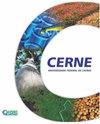CLIMATE ZONING FOR THE CULTIVATION OF AFRICAN MAHOGANY SPECIES IN BRAZIL
IF 0.7
4区 农林科学
Q3 FORESTRY
引用次数: 1
Abstract
African mahogany is the common name given to different species of the genus Khaya. They are tree species native to the African continent, which have a wood quality that allows their noble use in making fine furniture, and in the civil and naval industries. Currently, African mahogany cultivation has received notoriety in Brazil and given its climatic conditions. The country has great potential for planting these species. The purpose of this work was to identify climatic aptitude zones for African mahogany in Brazil. Based on the Kppen classification and in the means of relative air temperature and annual rainfall, a base map interpolation was performed to select regions suitable and restricted to planting and adequate growth of African mahogany species. In general, the regions that presented temperatures between 22 °C and 30 °C were considered of high fitness, while temperature values below 14 °C restricts plantations growth. Regarding to precipitation, areas considered to be of high aptitude have between 700 to 3,000 mm.year-1, extreme values may indicate regions of low suitability and restricted to the cultivation of African mahogany. From the climatic characteristics, it was determined that about 60% of the Brazilian area was of high fitness, between 16% and 32% of medium fitness, and less than 20% as low fitness. The Northeastern semi-arid region proved to be restricted to the cultivation of these species due to the low annual rainfall and a few places in the South region was also restricted due to low temperatures and risks of frost. 1State University of Tocantina Region of Maranhão, Imperatriz Maranhão, Brazil. ORCID: 0000-0002-0617-4293a 2Goias Federal University, Goiânia, Goiás, Brazil. ORCID: 0000-0002-3459-5650a CLIMATE ZONING FOR THE CULTIVATION OF AFRICAN MAHOGANY SPECIES IN BRAZIL巴西非洲红木种植的气候区划
非洲桃花心木是不同种类的桃花心木属的统称。它们是原产于非洲大陆的树种,具有优良的木材品质,可以用于制作精美的家具,以及民用和海军工业。目前,由于巴西的气候条件,非洲红木种植已经臭名昭著。该国种植这些物种的潜力很大。这项工作的目的是确定巴西非洲红木的气候适宜区。在Kppen分类的基础上,以相对气温和年降雨量为手段,对非洲红木的适宜种植和限制生长区域进行了底图插值。一般来说,温度在22°C到30°C之间的地区被认为是高适合度的,而温度低于14°C的地区则限制了人工林的生长。关于降水,被认为适合的地区年降水量在700到3000毫米之间,极值可能表明适合度较低的地区,仅限于非洲红木的种植。根据气候特征,确定巴西约60%的地区为高适合度,中等适合度在16% - 32%之间,低适合度不到20%。东北半干旱区由于年降雨量少,限制了这些物种的种植,南部地区的少数地方也由于低温和霜冻的风险而受到限制。1巴西maranh州托坎蒂纳州立大学,Imperatriz maranh,巴西;2Goias联邦大学,goi, Goiás,巴西。巴西非洲红木栽培的气候区划
本文章由计算机程序翻译,如有差异,请以英文原文为准。
求助全文
约1分钟内获得全文
求助全文
来源期刊

Cerne
农林科学-林学
CiteScore
1.60
自引率
0.00%
发文量
2
审稿时长
6-12 weeks
期刊介绍:
Cerne is a journal edited by the Federal University of Lavras, Minas Gerais state, Brazil, which quarterly publishes original articles that represent relevant contribution to Forestry Science development (Forest ecology, Forest Management, Silviculture, Technology of Forest Products).
 求助内容:
求助内容: 应助结果提醒方式:
应助结果提醒方式:


